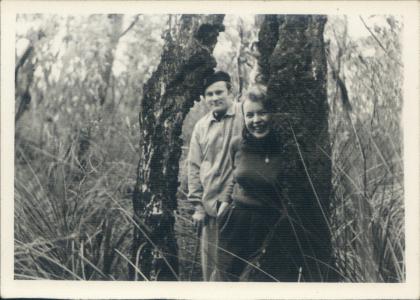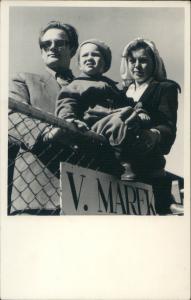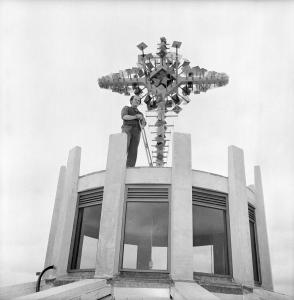The journey
Voitre Marek, an artist who's works are displayed at the Art Gallery of South Australia and the National Gallery of Australia, migrated to Australia in 1948.
Voitre met his wife to be, Vera, at University during the Second World War. In February 1948, everything changed when he was told that if he didn’t join the communist party, he would never be able to exhibit his artwork. It was then that the decision was made to leave Czechoslovakia. Voitre’s younger brother Dusan, also wanted to leave, so they arranged with a cousin who lived on the border, who was also part of the underground movement, to cross the border into Germany.
After arriving into a camp in Germany, and not having the bartering skills that other Czechs possessed, Voitre began making a bust for an American Commander. Voitre would travel to the American Commanders quarters once a week. His progress payments consisted of 2 peanut butter sandwiches.
Voitre and Dusan travelled to Australia on board the SS Charlton Sovereign. The ship ran into many troubles on the journey to Australia, taking 3 months to arrive, after stopping in Gibraltar and Jakarta.
After arriving in Australia, Voitre, Vera and Dusan decided to make Adelaide their home, taking jobs on the railway to start their new lives over.
Settlement
Vera arranged a job for Voitre at a local jeweller. After spending a further 2 years in Adelaide, Vera and Voitre decided to try the lighthouse keeper’s life.
The first lighthouse that they were stationed at was at Cape du Couedic, which is on Kangaroo Island. Voitre really enjoyed the lifestyle that being a lighthouse keeper offered. He was able to immerse himself in the Australian wildlife. After living the life of a lighthouse keeper for 3 years, the Mareks returned to Adelaide.
Voitre began work in a factory, and was doing welding, which would serve him really well in the future. Voitre decided it was time to concentrate solely on his artwork as that is why they left their home country.
Voitre was given his first commission for religious art, to make a statue of wrought iron 3 metres by 5 metres, to stand on top of the Seacombe Gardens Holy Spirit Church. At the same time Voitre also made 2 sandstone statues of St Joseph, which are still in a convent garden today. Voitre’s career took off from here. Due to the influx of migrants, there were many new churches being built. Voitre not only made statues, he also made the furnishings, stations of the cross, crucifixes, tabernacles, chalices and monstrances. He had work interstate, and has built items in Perth and Melbourne.
Voitre mainly worked with copper and enamel, and disliked working with plaster.
Things were going well for Voitre, until in 1973,on his way home from morning mass, in his small mini minor, Voitre was hit by a car. He suffered a terrible brain injury. This meant Voitre was no longer able to draw. But thanks to his 2 loyal employees, the workshop continued to produce work from all the drawings that were made before the accident.
Vera and Voitre made 2 trips back to Europe, before Voitre’s accident eventually got the better of him and he passed away in November 1999.









